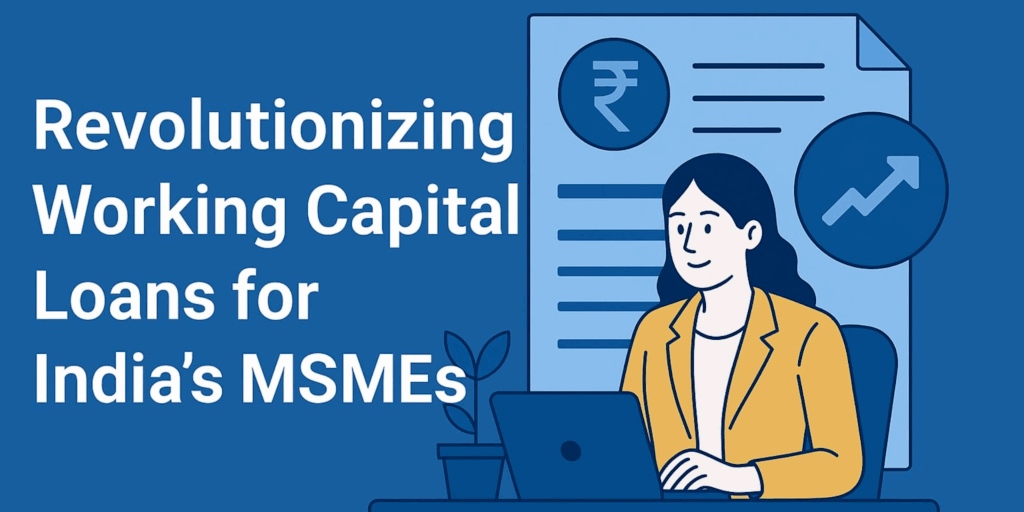Micro, small, and medium enterprises (MSMEs) form the backbone of India’s fast-growing economy. The sector makes up around 30% of the country’s GDP, and contributes to over 35% of its manufacturing and over 45% of its exports. These numbers only reinforce the importance of MSMEs in India’s growth story.
However, despite their rising prominence, many MSMEs struggle with some fundamental challenges. Top among these is the limited access to working capital. Many growing enterprises find it difficult to obtain the working capital financing required to make their operations smoother.
The reasons behind this may vary. Some MSMEs may have limited financial literacy, while others may have poor credit histories. Additionally, the complex lending process adopted by traditional lending institutions may also deter some MSMEs from seeking external funding.
Here is where Lendingkart emerges as a game-changer. With a digital lending interface that makes access to credit smooth and easy, this fintech lending platform makes working capital loans more accessible for MSMEs.
Lendingkart’s Journey
Lendingkart was founded by Harshvardhan Lunia and Mukul Sachan in 2014. Its primary goal since inception has been steady and unwavering. The Ahmedabad-based fintech startup aims to make working capital finance available more easily to entrepreneurs and MSMEs. In the decade since it was established, Lendingkart has remained committed to this goal and continues to bring more growing businesses into the formal credit network year after year.
The company has been backed by over 30 rounds of funding and has raised a total capital of $260 million. In its most recent round of Series E funding, Lendingkart received an infusion of ₹252 crores from Fullerton Financial Holdings (FFH).
Being a fintech lending platform, the company aims to digitize the process of financing MSMEs in India. Their mission remains strong, and they are committed to helping MSMEs with accessible working capital loans, so growing businesses can focus on their operations and scale easily.
Digital Lending Model
Lendingkart relies on the latest technology to streamline and simplify the MSME lending model in India. Here is how the fintech platform uses technology to make working capital loans more accessible.
Online Application Process
The loan application process is entirely online. This reduces the paperwork and makes working capital financing available to MSMEs round the clock, and not just during business hours.
AI-Driven Risk Assessment
The applicant businesses are reviewed and assessed using the latest artificial intelligence (AI) technologies. This quickens the process and brings more MSMEs into the formal financial network.
Instant Disbursement
Once an MSME has been assessed and deemed eligible, the funds are disbursed instantly. This makes access to funding quicker. Businesses can then accelerate their growth story.
This kind of tech-driven assessment and disbursal has many benefits for small business owners. The top advantages are:
Speed
Technology-based lending makes the entire process faster, from application to loan disbursal. This reduces the waiting time involved.
Accessibility
Even MSMEs without formal credit histories can be assessed with advanced AI technologies. This makes working capital loans accessible to many more MSMEs when compared with traditional lending.
Transparency
Technology also makes the process transparent. MSMEs can access the terms and conditions online and understand the terms and charges before borrowing money.
Impact on MSME Financing
Lendingkart’s modern technology-oriented lending model has had a significantly positive impact on MSME financing in India. In the 10+ years since it was founded, the company has made inroads in the MSME sector and has helped many growing businesses access funding that was previously more challenging to obtain.
The numbers tell the story more clearly. Since 2014, Lendingkart has disbursed over 3 lakh loans worth over ₹20,000 crores. The beneficiary MSMEs belong to over 4,100 cities and towns across India. This tells us how technology-based lending makes financing more accessible to growing businesses, even those in suburban and rural regions.
By streamlining MSME financing in this way, Lendingkart has also helped reduce the dependence on informal credit channels. These methods of financing typically carry higher interest rates and make it difficult for MSMEs to scale organically, because most of their revenue is redirected toward loan repayments. Some growing businesses may even have to resort to extra debt to pay off the high-interest loans obtained informally.
What’s more, by making working capital loans more easily available, Lendingkart has also contributed to India’s MSME growth story, created employment opportunities, and boosted the broader economy.
Future Outlook
In the coming months, Lendingkart aims to strengthen its offerings in specific ways. With the recent investment infusion by FFH, the company plans to expand its reach and make MSME financing available to more growing businesses. It also remains focused on strengthening its technological initiatives and expanding its offerings to underserved regions in the country.
These initiatives have the potential to reshape India’s SME financing solutions further. As technology-backed lending platforms like Lendingkart continue to serve scaling businesses, both individual MSMEs and the broader economy stand to benefit.
Conclusion
Looking back at its contribution to SME financing in the last 10+ years, it is clear that Lendingkart has played a notable role in making working capital loans available more easily to businesses that need the funding. In the years to come, this strategy will only continue to drive financial inclusion in India.





